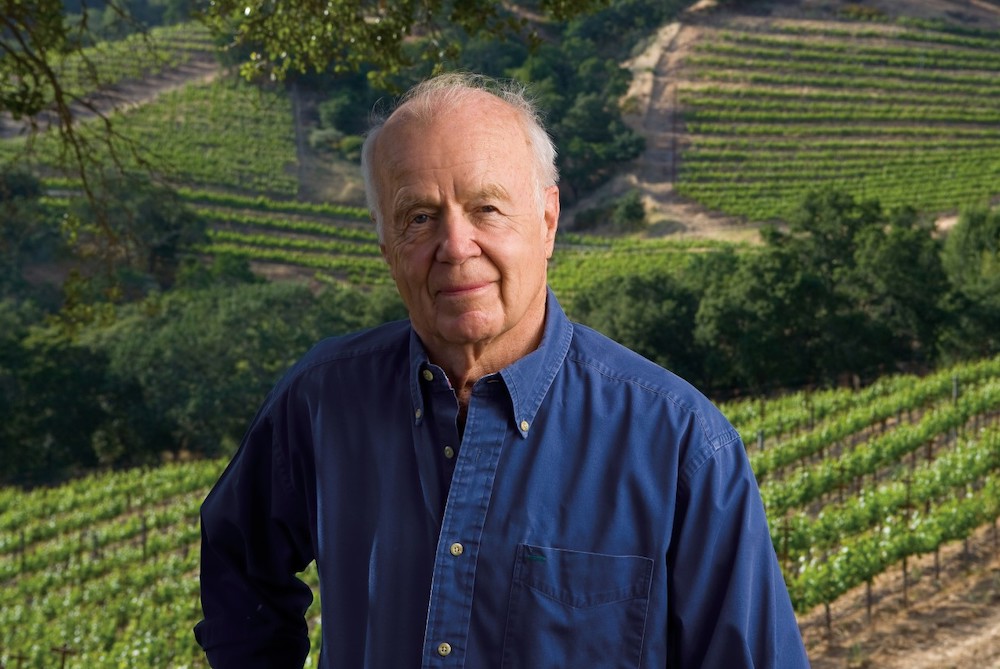COMMUNITY
Napa Valley Vintner John R. Shafer Dies at Age 94
Published On: March 04, 2019

Long-time Winery Owner and Innovator Left His Mark on Wine Industry and Napa Valley Charities
The Shafer family is deeply saddened to announce the death of their father, longtime vintner, philanthropist and winery founder, John Shafer on March 2, 2019.
“The world of wine always inspired Dad and he loved nothing more than to work with the Shafer team to improve quality, enhance everything we do, and to discuss future projects,” says Doug Shafer, president, Shafer Vineyards, who worked with his father since 1983. “He also loved Napa Valley, worked to make it a better place for everyone, and we’re receiving amazing messages from a huge number of people whose lives he touched with his generous spirit.”
John Shafer was part of a groundbreaking generation that came to Napa Valley in the late 1960s and early 1970s and transformed the region into the world-class wine producing area it is today.
Shafer was born in 1924 and spent most of his childhood in Glencoe, Illinois, a small suburb of Chicago. His mother, Adeline Ream, hailed from Peru, Indiana. His father, Frederick Shafer, was president of Imperial Brass Manufacturing, located in Chicago.
Over the course of his life, Shafer’s wide range of interests led him to many fascinating jobs and experiences. At age 17 he volunteered for service in World War II, joined the Army Air Corps, and piloted a B-24 bomber over Germany. After the war he earned an engineering degree from Cornell University and later he moved into publishing, starting as a salesman and eventually rising to the position of Vice President of Long Range Planning at educational publishing house Scott, Foresman & Co. in Chicago.
In 1973, at age 48, Shafer made a defining career choice, moving his family from Chicago to California’s Napa Valley. At the base of the Stags Leap palisades, he had discovered the kind of property that he had dreamed of – a hillside with thin, volcanic soils, the sort of vineyard site that he knew had been prized in the Mediterranean wine world for centuries.
The vineyard the family purchased had last been planted in 1922 and the vines were well past their prime. Shafer immediately embarked on his new career setting to work replanting the original 30 acres of vineyards and then began establishing new Cabernet Sauvignon vines on the hillsides. Learning as he went, Shafer spent the mid- to late-1970s mastering the intricate world of hillside planting and grape growing. Along the way he discovered more about the nature of the site, its soils, its climate, and how well it seemed matched to red grape varietals, especially Cabernet Sauvignon.
What began as a career in viticulture eventually expanded into full-scale winemaking. In 1978 he produced the first Shafer Vineyards wine, a Cabernet Sauvignon sourced from the first newly planted block of hillside vines. That debut wine was released in 1981 to high praise from critics and consumers alike; it set a benchmark for future Shafer hillside Cabernets and was the forerunner of the winery’s signature wine, Hillside Select.
In January 1983 he asked his son, Doug, to join the family enterprise as winemaker. A year later Doug hired Elias Fernandez to become assistant winemaker. With the home team in place, Shafer was able to spearhead the administrative and marketing side of the business, expanding into key markets both domestically and internationally.
In 1985 Shafer organized his neighboring vintners and grapegrowers including Nathan Fay, Warren Winiarski, Dick Steltner, and Joseph Phelps to petition the government to designate their region as an official American Viticultural Area (AVA). Four years later approval was granted, making Stags Leap District Napa Valley’s third
AVA. Today it is considered one of the world’s top regions for cultivating Cabernet Sauvignon.
In 1994 he initiated a shift in the core team, naming Doug Shafer the winery president and Elias Fernandez winemaker, while carving out a new role for himself as chairman. Stepping out of the president’s position allowed Shafer to become more involved in philanthropy.
Among Shafer’s chief concerns was ensuring that all Napa County residents have access to quality health care. In 1981 he was among the first vintners to support Auction Napa Valley, which has gone on to raise more than $185-million for health care, affordable housing and youth development. For more than 25 years he was a member of the board of Clinic Olè, a local non-profit community health clinic for low-income and uninsured patients.
In 1999 Shafer led an effort to create what became Napa Valley Vintners Community Health Center located on Pear Tree Lane in Napa. This unique facility was designed to house four nonprofit organizations that provide key medical and wellbeing services to Napa’s low-income residents. Each organization is guaranteed rent costs at well below market levels allowing them to utilize more of their budgets to provide critical services.
In more recent years, Shafer has helped raise funds in support of VOICES, a nonprofit that helps foster youth make the transition to successful adulthood. He also supported Wildlife Rescue Center of Napa County and was instrumental in Shafer Vineyard’s donation of land that today houses a wildlife rehabilitation site.
Over the decades, Shafer received numerous awards for both wine quality and for his work in philanthropy. In 2010 both he and son Doug were invited to the
James Beard Foundation Awards in New York, the “Oscars of the Food World,” where they were honored by being named “Outstanding Wine and Spirits Professionals.” Shafer was thrilled to join previous Napa Valley recipients: Robert Mondavi (‘91), André Tchelistcheff (‘92), and Jack and Jamie Davies (‘96).
Well into his 80s Shafer continued to travel extensively and pursued new interests such as learning to tango in Argentina and taking up sculpture. Those who visit the winery will see a life-size bronze statue that he made of his beloved companion Tucker, a gentle (but very large) Yellow Lab. Throughout his life, Shafer remained a long-range planner, always more interested in what might be happening five years from now rather than reminiscing about the past.
John Shafer is predeceased by son Bill Shafer, who died in 2000, his first wife Betty Shafer Wells in 2007, and his second wife Barbara Shafer, who died in 2016. He is survived by daughter Libby Shafer of St. Helena, sons Doug Shafer (Annette) of St. Helena, and Brad Shafer (Carrie) of San Francisco, 13 grandchildren, and one great grandchild.
The family is planning a private memorial service. They have requested that anyone who wishes to celebrate John Shafer’s life please make a donation to Ole Health, VOICES, or Napa Valley Wildlife Rescue.
